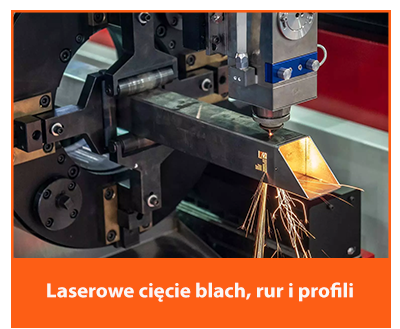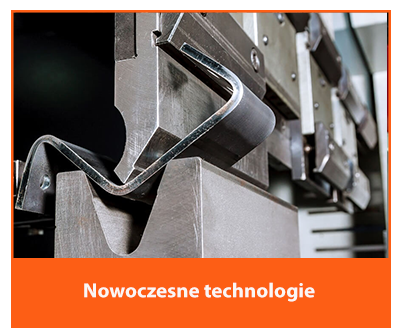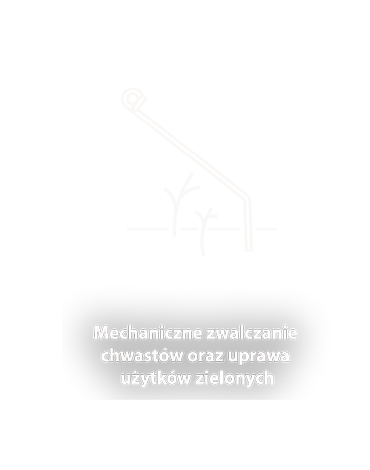

Blog
Czy mechaniczne usuwanie chwastów jest skuteczne? Z Rolmako – tak!
O tym, że zwalczanie chwastów na polu jest kluczowe w zapewnieniu optymalnych plonów, nikogo nie trzeba przekonywać. Chwasty, szczególnie te wieloletnie, głęboko ukorzenione, okradają rośliny uprawne z wody i składników odżywczych. Dodatkowo przy silnie zachwaszczonym polu do roślin może docierać nawet 80% mniej światła. Obniża to jakość zbiorów i opóźnia termin ich dojrzewania. Ocenia się, że chwasty wyrządzają więcej szkód na polu niż choroby i szkodniki. Z pomocą śpieszy Rolmako!

Usuwanie chwastów – chemiczne czy mechaniczne?
Powstaje więc ważne pytanie: jak skutecznie usuwać chwasty? Nurtuje ono zwłaszcza rolników, którzy zdecydowali się przejść na uprawę bez pługa albo ekologiczną. Wówczas nasiona chwastów osadzają się blisko powierzchni, skąd szybko wschodzą. Jednak bez względu na system uprawy rolnicy mają do wyboru chemiczne lub mechaniczne odchwaszczanie roli.

W przypadku herbicydów eksperci zalecają podzielić zabieg odchwaszczania na doglebowy (bezpośrednio po siewie) oraz nalistny. W uprawie bezorkowej może zajść potrzeba korekty herbicydowej na wiosnę. Wiele badań wykazuje blisko 100% skuteczność w usuwaniu chwastów. Jednak aby osiągnąć ten poziom, trzeba odpowiednio dobrać preparat i jego dawkę. Ponadto należy dostosować ją do rodzaju i wilgotności gleby, jej zasobności w substancje organiczne, wielkość kompleksu sorpcyjnego, fazy rozwoju chwastów i roślin, a nawet temperatury. Błąd popełniony choćby w jednym aspekcie nie tylko zmniejszy skuteczność walki z chwastami, ale może uszkodzić roślinę uprawną. Biorąc pod uwagę jeszcze inne problemy z herbicydami (np. restrykcje unijne i wzrost cen) nie dziwi fakt, że wielu rolników woli wrócić do mechanicznego usuwania chwastów.

Czy jednak taka metoda jest skuteczna?
Sprawdzali to między innymi naukowcy z Niemiec w 2021 r. Ich badanie pokazało, że użycie odpowiedniego narzędzia mechanicznego przy prędkości 6-8 km/h zapewnia 75% skuteczność usuwania chwastów w pszenicy ozimej i 82% skuteczność na polach z grochem pastewnym.

Podobne badania wykonali naukowcy z Uniwersytetu Rzeszowskiego. Przez 3 lata porównywali oni wpływ bronowania, metody mechaniczno-chemicznej oraz stosowania pełnej i zredukowanej dawki herbicydu na zachwaszczenie pszenicy jarej. Zarówno 2-krotne bronowanie, jak i zredukowana dawka herbicydu wyeliminowała 75-80% chwastów. Jeszcze lepszy efekt osiągnięto łącząc te metody, ponieważ ilość chwastów spadła o 92-94%.

Mechaniczne usuwanie chwastów – maszyny Rolmako
Rolmako jest jednym z innowacyjnych przedsiębiorstw, które wychodzi naprzeciw rosnącej tendencji wymiany środków chemicznych na urządzenia agrotechniczne niszczące zachwaszczenie. Ta polska firma z kilkudziesięcioletnim doświadczeniem oferuje maszyny do mechanicznego usuwania chwastów w uprawie zbóż, ziemniaków, kukurydzy, buraków, rzepaku oraz większości warzyw.

Chwastownik ActiVAgro
Chwastownik ActiVAgro składa się z wielu pojedynczych zębów sprężynowych, które są ciągnięte po uprawie. Sekcje robocze mają szerokość 1,5 m i składają się z 48 zębów umieszczonych w 6 rzędach. Każda część robocza jest zamontowana indywidualnie na wahaczu, dzięki czemu maszyna nie ma problemów z kopiowaniem terenu. Kąt pracy zębów chwastownika można regulować mechanicznie lub z kabiny ciągnika hydraulicznie. W maszynie zastosowano hydrauliczny system składania ramion pozwalający maksymalnie zredukować szerokość oraz wysokość transportową.

Dzięki temu maszyna mająca nawet 12 m szerokości roboczej, nie przekracza 3 m szerokości podczas transportu na drodze. ActiVAgro może być użyty do niszczenia chwastów zanim roślina wejdzie w fazę wschodzenia, a nawet po wzroście. Przy prawidłowym użytkowaniu zęby nie powinny uszkodzić ugruntowanych i silnie wyrośniętych roślin uprawnych. Wzruszą ziemię na tyle, aby chwasty oderwać od podłoża. Pozostawione na glebie uschną i obumrą. Chwastownik skutecznie niszczy chwasty w zbożach i roślinach motylkowych. Urządzenie sprawdzi się w rzepaku i innych zbożach, warzywach, kukurydzy, burakach cukrowych, ziemniakach, soi, grochu, dyni oraz w użytkach zielonych.

Brona rotacyjna Matrix
Brona rotacyjna Matrix działa trochę na innej zasadzie. Składa się z wielu tarcz gwiazdowych o średnicy 540 mm z 16 agresywnymi czubkami pracującymi w glebie. Podczas pracy czubki agresywnie zanurzają się w ziemi na głębokości do 40 mm, a następnie wraz z garstką ziemi wyrywają chwasty z korzeniami, które odłożone na powierzchni pola z czasem schną i gniją. Dopracowany kąt pracy gwiazdy chroni rośliny uprawne.

Brona rotacyjna Matrix wyposażona została w odporne na zużycie, samoostrzące się końcówki gwiazdy o szerokości 18 mm. Gwiazdy połączono zawieszeniem typu tandem. Każda para jest amortyzowana indywidualnie przy pomocy sprężyny. Dzięki temu maszyna może dopasować się do każdej nierówności pola na całej szerokości roboczej. Możliwość odchylania się gwiazd zapewnia bronie rotacyjnej Matrix płynną pracę.

Dodatkowo ramię zostało zaprojektowane tak, aby wyeliminować możliwość zakleszczenia kamienia pomiędzy nim i gwiazdami pielącymi. Dzięki temu, mimo że brona rotacyjna Matrix została zaprojektowana z myślą o międzyrzędowym usuwaniu chwastów, jest ona świetnym narzędziem do pracy na polu z dużą ilością resztek pożniwnych. Można jej użyć również do kruszenia zaskorupiałej gleby, mieszania nawozu z ziemią, pielęgnacji użytków zielonych oraz ultra-płytkiej podorywki.

Przejście brony powoduje również spulchnienie gleby i przerwanie podsiąku kapilarnego. Efektem jej pracy jest nie tylko brak chwastów, ale również poprawa właściwości wodnych i powietrznych ziemi. Praca z prędkościami rzędu 25 km/h w połączeniu z dużymi szerokościami roboczymi wpływa na wysoką wydajność pracy na hektar przy jednocześnie niewielkim zużyciu paliwa oraz elementów roboczych.

Brony i agregaty do mechanicznego usuwania chwastów
Nie każdy rolnik postanowi zakupić urządzenie ściśle przeznaczone do usuwania chwastów. W tym przypadku firma Rolmako proponuje użycie bardziej wszechstronnych narzędzi tj. brony mulczowej SpringExpert, która również składa się z zębów zamocowanych na sprężynie lub kombinacji kultywatora z broną ComboTill. Oba agregaty mają szerokie zastosowanie w ultra-płytkiej uprawie. Chwastownik ActiVAgro można zastąpić broną talerzową np. SpeedCutter od Rolmako.

Z Rolmako skutecznie usuniesz chwasty na polu!
Warto jednak pamiętać, że najefektywniej chwasty zwalcza się wiosną gdy są one w fazie liścieni albo wykształcania pierwszych liści właściwych. Potrzeba do tego dwóch przejazdów oraz odpowiedniej wilgotności gleby. Najlepiej, aby pod wpływem bronowania wierzchnia warstwa rozsypywała się na gruzełki. Z kolei zboża jare bronuje się w 3 zabiegach. Pierwszy 5-7 dni po zasiewie, drugi w czasie wschodu, a trzeci po wytworzeniu przez zboża czwartego liścia.

Oczywiście należy spełnić jeszcze inne warunki, aby mechaniczne usuwanie chwastów było jak najskuteczniejsze. Jednak o to zadbał producent. Na stronie Rolmako podano kiedy używać urządzenia, jak je ustawić, z jaką intensywnością pracować w zależności od rodzaju uprawy, liścienia i wysokości chwastów, a nawet jaka pogoda będzie najlepsza do odchwaszczania pola.



Czy jednak taka metoda jest skuteczna?
Sprawdzali to między innymi naukowcy z Niemiec w 2021 r. Ich badanie pokazało, że użycie odpowiedniego narzędzia mechanicznego przy prędkości 6-8 km/h zapewnia 75% skuteczność usuwania chwastów w pszenicy ozimej i 82% skuteczność na polach z grochem pastewnym.

Podobne badania wykonali naukowcy z Uniwersytetu Rzeszowskiego. Przez 3 lata porównywali oni wpływ bronowania, metody mechaniczno-chemicznej oraz stosowania pełnej i zredukowanej dawki herbicydu na zachwaszczenie pszenicy jarej. Zarówno 2-krotne bronowanie, jak i zredukowana dawka herbicydu wyeliminowała 75-80% chwastów. Jeszcze lepszy efekt osiągnięto łącząc te metody, ponieważ ilość chwastów spadła o 92-94%.

Mechaniczne usuwanie chwastów – maszyny Rolmako
Rolmako jest jednym z innowacyjnych przedsiębiorstw, które wychodzi naprzeciw rosnącej tendencji wymiany środków chemicznych na urządzenia agrotechniczne niszczące zachwaszczenie. Ta polska firma z kilkudziesięcioletnim doświadczeniem oferuje maszyny do mechanicznego usuwania chwastów w uprawie zbóż, ziemniaków, kukurydzy, buraków, rzepaku oraz większości warzyw.

Chwastownik ActiVAgro
Chwastownik ActiVAgro składa się z wielu pojedynczych zębów sprężynowych, które są ciągnięte po uprawie. Sekcje robocze mają szerokość 1,5 m i składają się z 48 zębów umieszczonych w 6 rzędach. Każda część robocza jest zamontowana indywidualnie na wahaczu, dzięki czemu maszyna nie ma problemów z kopiowaniem terenu. Kąt pracy zębów chwastownika można regulować mechanicznie lub z kabiny ciągnika hydraulicznie. W maszynie zastosowano hydrauliczny system składania ramion pozwalający maksymalnie zredukować szerokość oraz wysokość transportową.

Dzięki temu maszyna mająca nawet 12 m szerokości roboczej, nie przekracza 3 m szerokości podczas transportu na drodze. ActiVAgro może być użyty do niszczenia chwastów zanim roślina wejdzie w fazę wschodzenia, a nawet po wzroście. Przy prawidłowym użytkowaniu zęby nie powinny uszkodzić ugruntowanych i silnie wyrośniętych roślin uprawnych. Wzruszą ziemię na tyle, aby chwasty oderwać od podłoża. Pozostawione na glebie uschną i obumrą. Chwastownik skutecznie niszczy chwasty w zbożach i roślinach motylkowych. Urządzenie sprawdzi się w rzepaku i innych zbożach, warzywach, kukurydzy, burakach cukrowych, ziemniakach, soi, grochu, dyni oraz w użytkach zielonych.

Brona rotacyjna Matrix
Brona rotacyjna Matrix działa trochę na innej zasadzie. Składa się z wielu tarcz gwiazdowych o średnicy 540 mm z 16 agresywnymi czubkami pracującymi w glebie. Podczas pracy czubki agresywnie zanurzają się w ziemi na głębokości do 40 mm, a następnie wraz z garstką ziemi wyrywają chwasty z korzeniami, które odłożone na powierzchni pola z czasem schną i gniją. Dopracowany kąt pracy gwiazdy chroni rośliny uprawne.

Brona rotacyjna Matrix wyposażona została w odporne na zużycie, samoostrzące się końcówki gwiazdy o szerokości 18 mm. Gwiazdy połączono zawieszeniem typu tandem. Każda para jest amortyzowana indywidualnie przy pomocy sprężyny. Dzięki temu maszyna może dopasować się do każdej nierówności pola na całej szerokości roboczej. Możliwość odchylania się gwiazd zapewnia bronie rotacyjnej Matrix płynną pracę.

Dodatkowo ramię zostało zaprojektowane tak, aby wyeliminować możliwość zakleszczenia kamienia pomiędzy nim i gwiazdami pielącymi. Dzięki temu, mimo że brona rotacyjna Matrix została zaprojektowana z myślą o międzyrzędowym usuwaniu chwastów, jest ona świetnym narzędziem do pracy na polu z dużą ilością resztek pożniwnych. Można jej użyć również do kruszenia zaskorupiałej gleby, mieszania nawozu z ziemią, pielęgnacji użytków zielonych oraz ultra-płytkiej podorywki.

Przejście brony powoduje również spulchnienie gleby i przerwanie podsiąku kapilarnego. Efektem jej pracy jest nie tylko brak chwastów, ale również poprawa właściwości wodnych i powietrznych ziemi. Praca z prędkościami rzędu 25 km/h w połączeniu z dużymi szerokościami roboczymi wpływa na wysoką wydajność pracy na hektar przy jednocześnie niewielkim zużyciu paliwa oraz elementów roboczych.

Brony i agregaty do mechanicznego usuwania chwastów
Nie każdy rolnik postanowi zakupić urządzenie ściśle przeznaczone do usuwania chwastów. W tym przypadku firma Rolmako proponuje użycie bardziej wszechstronnych narzędzi tj. brony mulczowej SpringExpert, która również składa się z zębów zamocowanych na sprężynie lub kombinacji kultywatora z broną ComboTill. Oba agregaty mają szerokie zastosowanie w ultra-płytkiej uprawie. Chwastownik ActiVAgro można zastąpić broną talerzową np. SpeedCutter od Rolmako.

Z Rolmako skutecznie usuniesz chwasty na polu!
Warto jednak pamiętać, że najefektywniej chwasty zwalcza się wiosną gdy są one w fazie liścieni albo wykształcania pierwszych liści właściwych. Potrzeba do tego dwóch przejazdów oraz odpowiedniej wilgotności gleby. Najlepiej, aby pod wpływem bronowania wierzchnia warstwa rozsypywała się na gruzełki. Z kolei zboża jare bronuje się w 3 zabiegach. Pierwszy 5-7 dni po zasiewie, drugi w czasie wschodu, a trzeci po wytworzeniu przez zboża czwartego liścia.

Oczywiście należy spełnić jeszcze inne warunki, aby mechaniczne usuwanie chwastów było jak najskuteczniejsze. Jednak o to zadbał producent. Na stronie Rolmako podano kiedy używać urządzenia, jak je ustawić, z jaką intensywnością pracować w zależności od rodzaju uprawy, liścienia i wysokości chwastów, a nawet jaka pogoda będzie najlepsza do odchwaszczania pola.



Mechaniczne usuwanie chwastów – maszyny Rolmako
Rolmako jest jednym z innowacyjnych przedsiębiorstw, które wychodzi naprzeciw rosnącej tendencji wymiany środków chemicznych na urządzenia agrotechniczne niszczące zachwaszczenie. Ta polska firma z kilkudziesięcioletnim doświadczeniem oferuje maszyny do mechanicznego usuwania chwastów w uprawie zbóż, ziemniaków, kukurydzy, buraków, rzepaku oraz większości warzyw.

Chwastownik ActiVAgro
Chwastownik ActiVAgro składa się z wielu pojedynczych zębów sprężynowych, które są ciągnięte po uprawie. Sekcje robocze mają szerokość 1,5 m i składają się z 48 zębów umieszczonych w 6 rzędach. Każda część robocza jest zamontowana indywidualnie na wahaczu, dzięki czemu maszyna nie ma problemów z kopiowaniem terenu. Kąt pracy zębów chwastownika można regulować mechanicznie lub z kabiny ciągnika hydraulicznie. W maszynie zastosowano hydrauliczny system składania ramion pozwalający maksymalnie zredukować szerokość oraz wysokość transportową.

Dzięki temu maszyna mająca nawet 12 m szerokości roboczej, nie przekracza 3 m szerokości podczas transportu na drodze. ActiVAgro może być użyty do niszczenia chwastów zanim roślina wejdzie w fazę wschodzenia, a nawet po wzroście. Przy prawidłowym użytkowaniu zęby nie powinny uszkodzić ugruntowanych i silnie wyrośniętych roślin uprawnych. Wzruszą ziemię na tyle, aby chwasty oderwać od podłoża. Pozostawione na glebie uschną i obumrą. Chwastownik skutecznie niszczy chwasty w zbożach i roślinach motylkowych. Urządzenie sprawdzi się w rzepaku i innych zbożach, warzywach, kukurydzy, burakach cukrowych, ziemniakach, soi, grochu, dyni oraz w użytkach zielonych.

Brona rotacyjna Matrix
Brona rotacyjna Matrix działa trochę na innej zasadzie. Składa się z wielu tarcz gwiazdowych o średnicy 540 mm z 16 agresywnymi czubkami pracującymi w glebie. Podczas pracy czubki agresywnie zanurzają się w ziemi na głębokości do 40 mm, a następnie wraz z garstką ziemi wyrywają chwasty z korzeniami, które odłożone na powierzchni pola z czasem schną i gniją. Dopracowany kąt pracy gwiazdy chroni rośliny uprawne.

Brona rotacyjna Matrix wyposażona została w odporne na zużycie, samoostrzące się końcówki gwiazdy o szerokości 18 mm. Gwiazdy połączono zawieszeniem typu tandem. Każda para jest amortyzowana indywidualnie przy pomocy sprężyny. Dzięki temu maszyna może dopasować się do każdej nierówności pola na całej szerokości roboczej. Możliwość odchylania się gwiazd zapewnia bronie rotacyjnej Matrix płynną pracę.

Dodatkowo ramię zostało zaprojektowane tak, aby wyeliminować możliwość zakleszczenia kamienia pomiędzy nim i gwiazdami pielącymi. Dzięki temu, mimo że brona rotacyjna Matrix została zaprojektowana z myślą o międzyrzędowym usuwaniu chwastów, jest ona świetnym narzędziem do pracy na polu z dużą ilością resztek pożniwnych. Można jej użyć również do kruszenia zaskorupiałej gleby, mieszania nawozu z ziemią, pielęgnacji użytków zielonych oraz ultra-płytkiej podorywki.

Przejście brony powoduje również spulchnienie gleby i przerwanie podsiąku kapilarnego. Efektem jej pracy jest nie tylko brak chwastów, ale również poprawa właściwości wodnych i powietrznych ziemi. Praca z prędkościami rzędu 25 km/h w połączeniu z dużymi szerokościami roboczymi wpływa na wysoką wydajność pracy na hektar przy jednocześnie niewielkim zużyciu paliwa oraz elementów roboczych.

Brony i agregaty do mechanicznego usuwania chwastów
Nie każdy rolnik postanowi zakupić urządzenie ściśle przeznaczone do usuwania chwastów. W tym przypadku firma Rolmako proponuje użycie bardziej wszechstronnych narzędzi tj. brony mulczowej SpringExpert, która również składa się z zębów zamocowanych na sprężynie lub kombinacji kultywatora z broną ComboTill. Oba agregaty mają szerokie zastosowanie w ultra-płytkiej uprawie. Chwastownik ActiVAgro można zastąpić broną talerzową np. SpeedCutter od Rolmako.

Z Rolmako skutecznie usuniesz chwasty na polu!
Warto jednak pamiętać, że najefektywniej chwasty zwalcza się wiosną gdy są one w fazie liścieni albo wykształcania pierwszych liści właściwych. Potrzeba do tego dwóch przejazdów oraz odpowiedniej wilgotności gleby. Najlepiej, aby pod wpływem bronowania wierzchnia warstwa rozsypywała się na gruzełki. Z kolei zboża jare bronuje się w 3 zabiegach. Pierwszy 5-7 dni po zasiewie, drugi w czasie wschodu, a trzeci po wytworzeniu przez zboża czwartego liścia.

Oczywiście należy spełnić jeszcze inne warunki, aby mechaniczne usuwanie chwastów było jak najskuteczniejsze. Jednak o to zadbał producent. Na stronie Rolmako podano kiedy używać urządzenia, jak je ustawić, z jaką intensywnością pracować w zależności od rodzaju uprawy, liścienia i wysokości chwastów, a nawet jaka pogoda będzie najlepsza do odchwaszczania pola.



Dzięki temu maszyna mająca nawet 12 m szerokości roboczej, nie przekracza 3 m szerokości podczas transportu na drodze. ActiVAgro może być użyty do niszczenia chwastów zanim roślina wejdzie w fazę wschodzenia, a nawet po wzroście. Przy prawidłowym użytkowaniu zęby nie powinny uszkodzić ugruntowanych i silnie wyrośniętych roślin uprawnych. Wzruszą ziemię na tyle, aby chwasty oderwać od podłoża. Pozostawione na glebie uschną i obumrą. Chwastownik skutecznie niszczy chwasty w zbożach i roślinach motylkowych. Urządzenie sprawdzi się w rzepaku i innych zbożach, warzywach, kukurydzy, burakach cukrowych, ziemniakach, soi, grochu, dyni oraz w użytkach zielonych.

Brona rotacyjna Matrix
Brona rotacyjna Matrix działa trochę na innej zasadzie. Składa się z wielu tarcz gwiazdowych o średnicy 540 mm z 16 agresywnymi czubkami pracującymi w glebie. Podczas pracy czubki agresywnie zanurzają się w ziemi na głębokości do 40 mm, a następnie wraz z garstką ziemi wyrywają chwasty z korzeniami, które odłożone na powierzchni pola z czasem schną i gniją. Dopracowany kąt pracy gwiazdy chroni rośliny uprawne.

Brona rotacyjna Matrix wyposażona została w odporne na zużycie, samoostrzące się końcówki gwiazdy o szerokości 18 mm. Gwiazdy połączono zawieszeniem typu tandem. Każda para jest amortyzowana indywidualnie przy pomocy sprężyny. Dzięki temu maszyna może dopasować się do każdej nierówności pola na całej szerokości roboczej. Możliwość odchylania się gwiazd zapewnia bronie rotacyjnej Matrix płynną pracę.

Dodatkowo ramię zostało zaprojektowane tak, aby wyeliminować możliwość zakleszczenia kamienia pomiędzy nim i gwiazdami pielącymi. Dzięki temu, mimo że brona rotacyjna Matrix została zaprojektowana z myślą o międzyrzędowym usuwaniu chwastów, jest ona świetnym narzędziem do pracy na polu z dużą ilością resztek pożniwnych. Można jej użyć również do kruszenia zaskorupiałej gleby, mieszania nawozu z ziemią, pielęgnacji użytków zielonych oraz ultra-płytkiej podorywki.

Przejście brony powoduje również spulchnienie gleby i przerwanie podsiąku kapilarnego. Efektem jej pracy jest nie tylko brak chwastów, ale również poprawa właściwości wodnych i powietrznych ziemi. Praca z prędkościami rzędu 25 km/h w połączeniu z dużymi szerokościami roboczymi wpływa na wysoką wydajność pracy na hektar przy jednocześnie niewielkim zużyciu paliwa oraz elementów roboczych.

Brony i agregaty do mechanicznego usuwania chwastów
Nie każdy rolnik postanowi zakupić urządzenie ściśle przeznaczone do usuwania chwastów. W tym przypadku firma Rolmako proponuje użycie bardziej wszechstronnych narzędzi tj. brony mulczowej SpringExpert, która również składa się z zębów zamocowanych na sprężynie lub kombinacji kultywatora z broną ComboTill. Oba agregaty mają szerokie zastosowanie w ultra-płytkiej uprawie. Chwastownik ActiVAgro można zastąpić broną talerzową np. SpeedCutter od Rolmako.

Z Rolmako skutecznie usuniesz chwasty na polu!
Warto jednak pamiętać, że najefektywniej chwasty zwalcza się wiosną gdy są one w fazie liścieni albo wykształcania pierwszych liści właściwych. Potrzeba do tego dwóch przejazdów oraz odpowiedniej wilgotności gleby. Najlepiej, aby pod wpływem bronowania wierzchnia warstwa rozsypywała się na gruzełki. Z kolei zboża jare bronuje się w 3 zabiegach. Pierwszy 5-7 dni po zasiewie, drugi w czasie wschodu, a trzeci po wytworzeniu przez zboża czwartego liścia.

Oczywiście należy spełnić jeszcze inne warunki, aby mechaniczne usuwanie chwastów było jak najskuteczniejsze. Jednak o to zadbał producent. Na stronie Rolmako podano kiedy używać urządzenia, jak je ustawić, z jaką intensywnością pracować w zależności od rodzaju uprawy, liścienia i wysokości chwastów, a nawet jaka pogoda będzie najlepsza do odchwaszczania pola.



Brona rotacyjna Matrix wyposażona została w odporne na zużycie, samoostrzące się końcówki gwiazdy o szerokości 18 mm. Gwiazdy połączono zawieszeniem typu tandem. Każda para jest amortyzowana indywidualnie przy pomocy sprężyny. Dzięki temu maszyna może dopasować się do każdej nierówności pola na całej szerokości roboczej. Możliwość odchylania się gwiazd zapewnia bronie rotacyjnej Matrix płynną pracę.

Dodatkowo ramię zostało zaprojektowane tak, aby wyeliminować możliwość zakleszczenia kamienia pomiędzy nim i gwiazdami pielącymi. Dzięki temu, mimo że brona rotacyjna Matrix została zaprojektowana z myślą o międzyrzędowym usuwaniu chwastów, jest ona świetnym narzędziem do pracy na polu z dużą ilością resztek pożniwnych. Można jej użyć również do kruszenia zaskorupiałej gleby, mieszania nawozu z ziemią, pielęgnacji użytków zielonych oraz ultra-płytkiej podorywki.

Przejście brony powoduje również spulchnienie gleby i przerwanie podsiąku kapilarnego. Efektem jej pracy jest nie tylko brak chwastów, ale również poprawa właściwości wodnych i powietrznych ziemi. Praca z prędkościami rzędu 25 km/h w połączeniu z dużymi szerokościami roboczymi wpływa na wysoką wydajność pracy na hektar przy jednocześnie niewielkim zużyciu paliwa oraz elementów roboczych.

Brony i agregaty do mechanicznego usuwania chwastów
Nie każdy rolnik postanowi zakupić urządzenie ściśle przeznaczone do usuwania chwastów. W tym przypadku firma Rolmako proponuje użycie bardziej wszechstronnych narzędzi tj. brony mulczowej SpringExpert, która również składa się z zębów zamocowanych na sprężynie lub kombinacji kultywatora z broną ComboTill. Oba agregaty mają szerokie zastosowanie w ultra-płytkiej uprawie. Chwastownik ActiVAgro można zastąpić broną talerzową np. SpeedCutter od Rolmako.

Z Rolmako skutecznie usuniesz chwasty na polu!
Warto jednak pamiętać, że najefektywniej chwasty zwalcza się wiosną gdy są one w fazie liścieni albo wykształcania pierwszych liści właściwych. Potrzeba do tego dwóch przejazdów oraz odpowiedniej wilgotności gleby. Najlepiej, aby pod wpływem bronowania wierzchnia warstwa rozsypywała się na gruzełki. Z kolei zboża jare bronuje się w 3 zabiegach. Pierwszy 5-7 dni po zasiewie, drugi w czasie wschodu, a trzeci po wytworzeniu przez zboża czwartego liścia.

Oczywiście należy spełnić jeszcze inne warunki, aby mechaniczne usuwanie chwastów było jak najskuteczniejsze. Jednak o to zadbał producent. Na stronie Rolmako podano kiedy używać urządzenia, jak je ustawić, z jaką intensywnością pracować w zależności od rodzaju uprawy, liścienia i wysokości chwastów, a nawet jaka pogoda będzie najlepsza do odchwaszczania pola.



Przejście brony powoduje również spulchnienie gleby i przerwanie podsiąku kapilarnego. Efektem jej pracy jest nie tylko brak chwastów, ale również poprawa właściwości wodnych i powietrznych ziemi. Praca z prędkościami rzędu 25 km/h w połączeniu z dużymi szerokościami roboczymi wpływa na wysoką wydajność pracy na hektar przy jednocześnie niewielkim zużyciu paliwa oraz elementów roboczych.

Brony i agregaty do mechanicznego usuwania chwastów
Nie każdy rolnik postanowi zakupić urządzenie ściśle przeznaczone do usuwania chwastów. W tym przypadku firma Rolmako proponuje użycie bardziej wszechstronnych narzędzi tj. brony mulczowej SpringExpert, która również składa się z zębów zamocowanych na sprężynie lub kombinacji kultywatora z broną ComboTill. Oba agregaty mają szerokie zastosowanie w ultra-płytkiej uprawie. Chwastownik ActiVAgro można zastąpić broną talerzową np. SpeedCutter od Rolmako.

Z Rolmako skutecznie usuniesz chwasty na polu!
Warto jednak pamiętać, że najefektywniej chwasty zwalcza się wiosną gdy są one w fazie liścieni albo wykształcania pierwszych liści właściwych. Potrzeba do tego dwóch przejazdów oraz odpowiedniej wilgotności gleby. Najlepiej, aby pod wpływem bronowania wierzchnia warstwa rozsypywała się na gruzełki. Z kolei zboża jare bronuje się w 3 zabiegach. Pierwszy 5-7 dni po zasiewie, drugi w czasie wschodu, a trzeci po wytworzeniu przez zboża czwartego liścia.

Oczywiście należy spełnić jeszcze inne warunki, aby mechaniczne usuwanie chwastów było jak najskuteczniejsze. Jednak o to zadbał producent. Na stronie Rolmako podano kiedy używać urządzenia, jak je ustawić, z jaką intensywnością pracować w zależności od rodzaju uprawy, liścienia i wysokości chwastów, a nawet jaka pogoda będzie najlepsza do odchwaszczania pola.



Z Rolmako skutecznie usuniesz chwasty na polu!
Warto jednak pamiętać, że najefektywniej chwasty zwalcza się wiosną gdy są one w fazie liścieni albo wykształcania pierwszych liści właściwych. Potrzeba do tego dwóch przejazdów oraz odpowiedniej wilgotności gleby. Najlepiej, aby pod wpływem bronowania wierzchnia warstwa rozsypywała się na gruzełki. Z kolei zboża jare bronuje się w 3 zabiegach. Pierwszy 5-7 dni po zasiewie, drugi w czasie wschodu, a trzeci po wytworzeniu przez zboża czwartego liścia.

Oczywiście należy spełnić jeszcze inne warunki, aby mechaniczne usuwanie chwastów było jak najskuteczniejsze. Jednak o to zadbał producent. Na stronie Rolmako podano kiedy używać urządzenia, jak je ustawić, z jaką intensywnością pracować w zależności od rodzaju uprawy, liścienia i wysokości chwastów, a nawet jaka pogoda będzie najlepsza do odchwaszczania pola.





























